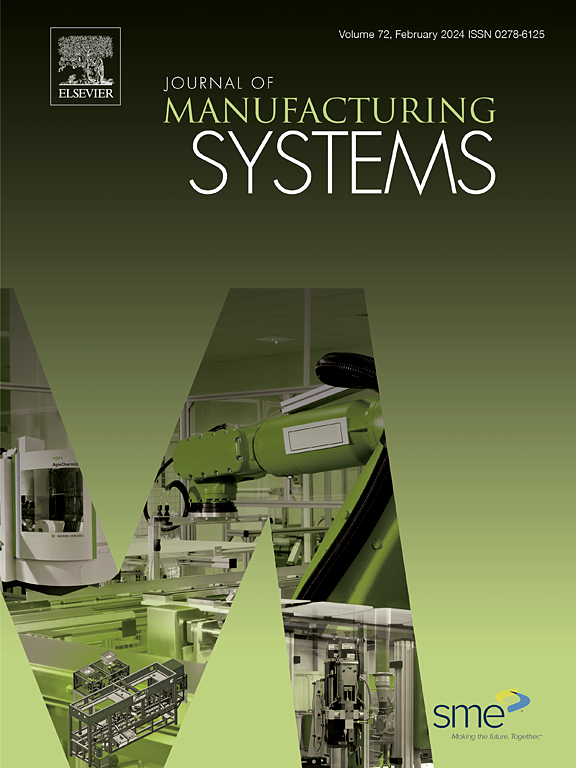Systematic AR-based assembly guidance for small-scale, high-density industrial components
IF 12.2
1区 工程技术
Q1 ENGINEERING, INDUSTRIAL
引用次数: 0
Abstract
Small-scale high-density industrial components (SHIC) are widely used in high-end electromechanical equipment with higher requirements for functional integration. SHIC assembly operation is a typical manual fine operation, which is labor-intensive, time-consuming, and error-prone and seriously affects assembly efficiency and quality consistency. The current augmented reality (AR) technology cannot realize the complete, accurate, and stable cognition and guidance for SHIC because of the single use of visual cognition. Meanwhile, manual preparation of prior knowledge dramatically reduces AR applications’ automation level and practicability. Addressing this research gap, this paper develops a technical framework of AR-based assembly guidance for SHIC, which integrates several novel intelligent methods and deeply combines prior knowledge reasoning and computer vision cognition in a simple and interpretable way. First, computer vision and deep learning are used to automatically generate prior knowledge from the three-dimensional (3D) model of SHIC. Then, 3D tracking, visual recognition, virtual-real matching, and rule reasoning are combined to complete, sequence, and locate the assembly targets in the case of insufficient visual information. Finally, based on the adaptive threshold, two kinds of guidance modes, i.e., position-based precise guidance and region-based heuristic guidance, are automatically switched to realize the AR guidance of the whole assembly process. The case study of complex electrical connectors shows that this framework with novel intelligent methods can meet the industrial requirements of performance, availability, and effectiveness and improve the robustness and efficiency of SHIC assembly operation by 92.95% and 87.06%, respectively. This study realizes AR guidance technology’s systematic and practical application in SHIC assembly operation. Also, it provides a practicable technology architecture for intelligent AR assistance in the fine assembly field.
求助全文
约1分钟内获得全文
求助全文
来源期刊

Journal of Manufacturing Systems
工程技术-工程:工业
CiteScore
23.30
自引率
13.20%
发文量
216
审稿时长
25 days
期刊介绍:
The Journal of Manufacturing Systems is dedicated to showcasing cutting-edge fundamental and applied research in manufacturing at the systems level. Encompassing products, equipment, people, information, control, and support functions, manufacturing systems play a pivotal role in the economical and competitive development, production, delivery, and total lifecycle of products, meeting market and societal needs.
With a commitment to publishing archival scholarly literature, the journal strives to advance the state of the art in manufacturing systems and foster innovation in crafting efficient, robust, and sustainable manufacturing systems. The focus extends from equipment-level considerations to the broader scope of the extended enterprise. The Journal welcomes research addressing challenges across various scales, including nano, micro, and macro-scale manufacturing, and spanning diverse sectors such as aerospace, automotive, energy, and medical device manufacturing.
 求助内容:
求助内容: 应助结果提醒方式:
应助结果提醒方式:


